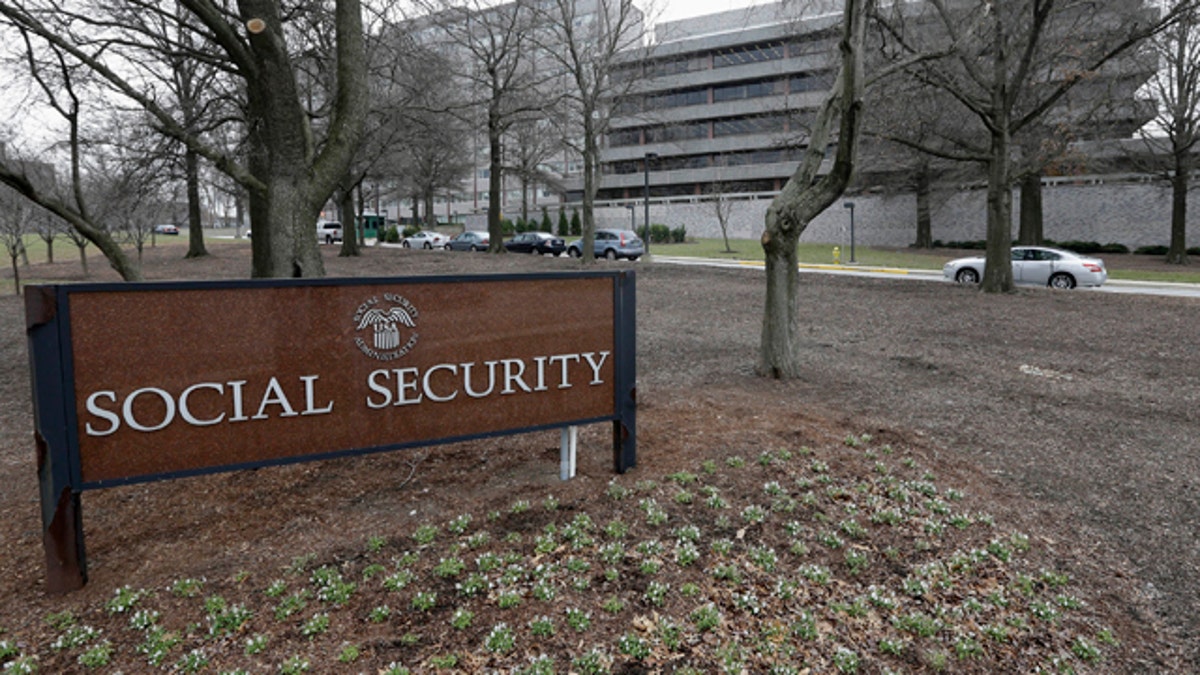
Jan. 11, 2013: The Social Security Administration's main campus in Woodlawn, Md. (AP)
The Social Security Administration made $1.3 billion in potentially improper disability payments to people who were believed to be employed when they were supposed to be unable to work, according to a Government Accountability Office report released Friday.
The Government Accountability Office estimated that the agency made the potential cash benefit overpayments to about 36,000 individuals from December 2010 to January 2013.
The numbers represent less than 1 percent of beneficiaries and less than 1 percent of disability payments made during the time frame. But GAO said the overpayments reveal weaknesses in Social Security's procedures for policing the system.
The precise number of individuals who received improper disability payments and the exact amount of improper payments made to those recipients cannot be determined without detailed case investigations, according to the report.
The report comes as Social Security's disability program faces a financial crisis. If Congress doesn't act, the trust fund that supports the disability program will run out of money in 2016, according to projections by Social Security's trustees. At that point, the system will collect only enough money in payroll taxes to pay 80 percent of benefits, triggering an automatic 20 percent cut in benefits.
Congress could redirect money from Social Security's much bigger retirement program to shore up the disability program, as it did in 1994. But that would worsen the finances of the retirement program, which is facing its own long-term financial problems.
"This report demonstrates just how little importance the Social Security Administration places on policing its disability rolls," said Sen. Tom Coburn of Oklahoma, the ranking Republican on the Senate Homeland Security and Governmental Affairs Committee. "SSA has known for years that it could prevent millions of dollars in improper disability payments using quarterly wage records, but chose not to."
Sen. Tom Carper, D-Del., chairman of the Senate Homeland Security and Governmental Affairs Committee, said the report offers common-sense steps that the Social Security Administration can take in order to avoid improper payments.
"However, if we're serious about preventing waste and fraud and ensuring that these critical benefits get to the people who need and deserve them, Congress must also do its part and provide needed resources and access to basic anti-fraud data to the Social Security Administration," Carper said.
The Social Security Administration said its accuracy rate for disability payments is more than 99 percent. But the agency noted that even small errors translate into big numbers.
"We are planning to do an investigation, and we will recoup any improper payments from beneficiaries," Social Security spokesman Mark Hinkle said. "It is too soon to tell what caused these overpayments, but if we determine that fraud is involved, we will refer these cases to our office of the inspector general for investigation."
More than 8.2 million disabled workers received disability payments in December 2010, a figure that has grown to nearly 9 million. Last year, the agency paid out $137 billion in disability payments.
Before people can receive disability benefits, there is a 5-month waiting period in which they can, in general, earn no more than about $1,000 a month. The waiting period is to ensure that beneficiaries have long-term disabilities.
Using a federal wage database, investigators checked whether a sample of disability beneficiaries had worked and earned significant wages during the waiting period, the report said. They found that most of the improper payments went to people who worked during the five months they waited for payments to begin.
Once people start receiving benefits, they can return to work and still get benefits during a trial work period, in an attempt to re-enter the workforce. Using the same wage database, investigators checked whether another sample of disability beneficiaries earned significant wages after their trial work period had ended, the report said.
Based on their findings, the GAO estimated the amount of improper payments and the number of people receiving them.
Citing a potential weakness, the report said Social Security might not detect a person who worked during the waiting period if the period started in one year and ended in another. For example, if Social Security starts paying benefits in February, the agency might not detect significant wages earned the previous November because they weren't earned in the same year that benefits were awarded, the report said.
In a written response to the report, the Social Security Administration agency questioned whether GAO overestimated the amount of overpayments. The agency said investigators did not determine whether the work activity qualified as an unsuccessful attempt to return to work, or whether there were any other special circumstances.
The Associated Press contributed to this report.




